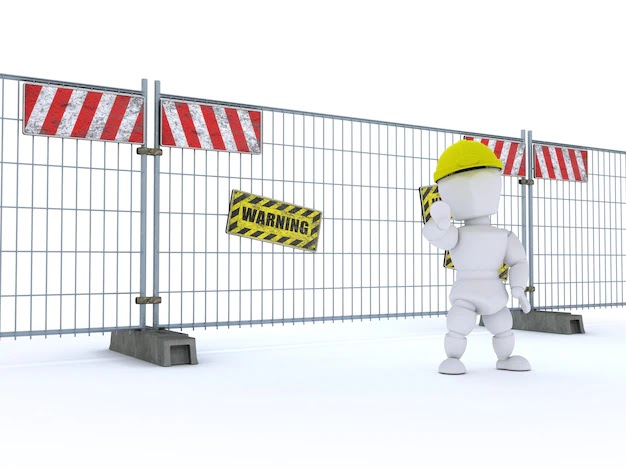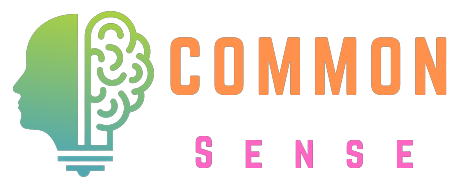
Using a Planner Effectively
I. Why Use a Planner
Before diving into the details of how to use a planner, it’s important to understand the benefits. Here are some of the key reasons why using a planner can be a game-changer for productivity:
1. Time Management: Planners help you visualize your tasks and manage your time more effectively. By scheduling tasks and appointments, you’re less likely to double-book or forget important commitments.
2. Goal Tracking: Whether you're setting short-term goals (daily and weekly) or long-term ones (monthly or yearly), a planner helps you stay on track and monitor your progress.
3. Stress Reduction: When you have a clear plan, it reduces stress. You know what needs to be done, when it needs to be done, and how you’re going to tackle it.
4. Productivity Boost: A planner helps you prioritize your tasks, ensuring you focus on what’s most important, not just what’s urgent.
II. Choosing the Right Planner
There are various types of planners available, and choosing the right one depends on your personal preferences and lifestyle. Here are some common types:
1. Daily Planner: A daily planner breaks down your day by hours, allowing you to organize your time meticulously. It’s perfect for people who have busy schedules and need to track appointments, meetings, or specific deadlines.
2. Weekly Planner: A weekly planner gives you an overview of the week, with each day represented in a column or row. It’s ideal for balancing work tasks, personal responsibilities, and events over a longer period.
3. Monthly Planner: A monthly planner offers a broader view of the entire month, making it ideal for long-term planning, tracking recurring events, and setting big-picture goals.
III. Step-by-Step Guide to Using a Planner Effectively
1. Start with Monthly Planning
Monthly planning provides a high-level view of your upcoming events, deadlines, and goals. It allows you to see the big picture and plan ahead for important events or milestones. Here’s how to make the most of your monthly planner:
- Set Monthly Goals: At the beginning of each month, identify your top priorities. These could be related to work, personal growth, fitness, or hobbies. Write down 3-5 major goals that you want to accomplish by the end of the month.
- Mark Important Dates: Start by entering key dates like meetings, birthdays, anniversaries, project deadlines, and any other important events. This gives you a framework for what’s happening that month.
- Schedule Recurring Tasks: If you have recurring events like weekly meetings or gym sessions, block them into your monthly planner. This gives you a sense of how much free time you have available.
- Create a Rough Outline: Once your important dates and recurring tasks are set, create a rough outline of when you’ll work on different goals. This helps you break your goals into manageable chunks throughout the month.
- Review and Adjust: At the end of each week, review your progress. Are you on track to meet your goals? If not, adjust your plan accordingly for the following weeks.
2. Use Your Weekly Planner for Focus and Flexibility
A weekly planner provides a balance between detailed daily planning and the big-picture view of a monthly calendar. It’s the perfect tool for balancing short-term tasks with long-term goals. Here’s how to effectively use your weekly planner:
- Plan at the Start of the Week: Choose a day to sit down and plan your week ahead. Sunday evenings or Monday mornings work well for this. List out your priorities, meetings, deadlines, and personal commitments.
- Break Down Your Monthly Goals: Take the monthly goals you set and break them down into smaller tasks or milestones that can be accomplished during the week. For example, if your monthly goal is to complete a 5,000-word article, your weekly goal might be to write 1,000 words.
- Prioritize Tasks: Use a prioritization method, like the Eisenhower Matrix or ABC method, to organize your weekly tasks. Focus on high-priority tasks first and schedule them into your week.
- Time-Block Your Days: Time-blocking is a technique where you schedule specific tasks for certain times of the day. For example, if you know you’re most productive in the morning, block out that time for high-focus tasks like writing or problem-solving.
- Be Flexible: Life happens, and plans change. Leave some buffer time in your weekly schedule for unexpected tasks or delays. If something urgent comes up, adjust your schedule rather than abandoning it entirely.
3. Master Daily Planning for Maximum Productivity
Daily planning is where you dive into the nitty-gritty of your schedule. It’s the most detailed level of planning and helps you stay organized on a day-to-day basis. Here’s how to use your daily planner effectively:
- Set Your Top 3 Priorities: Each morning (or the night before), identify your top three tasks for the day. These are the tasks that will make the biggest impact on your goals. Completing them should be your main focus.
- Time-Block Your Day: Just like with weekly planning, time-blocking your day helps you stay organized. Divide your day into chunks of time dedicated to specific tasks. This method is especially useful for breaking down large projects into smaller, manageable pieces.
- Track Appointments and Meetings: Use your daily planner to track all your appointments and meetings. This helps you visualize your free time and ensures you don’t overbook yourself.
- Include Personal Time: Don’t just plan your work tasks. Include breaks, meals, and personal activities in your daily planner. Scheduling time for yourself helps prevent burnout and keeps your energy levels high.
- End-of-Day Review: At the end of each day, review what you accomplished. Did you finish your top three tasks? If not, reflect on what got in the way and adjust your approach for the next day.
4. Combine Digital and Paper Planners for the Best of Both Worlds
Some people prefer the tactile experience of writing in a paper planner, while others appreciate the convenience of digital tools. The good news is, you don’t have to choose—you can use both! Here’s how to combine digital and paper planners for maximum effectiveness:
- Digital Planners for Flexibility: Use digital planners or apps (like Google Calendar, Todoist, or Notion) for tasks that require flexibility. Digital tools are great for scheduling meetings, setting reminders, and accessing your plans from anywhere.
- Paper Planners for Focus: Use a paper planner for your daily and weekly tasks, goals, and reflections. Writing things down by hand helps you process and retain information better, and it encourages mindfulness in your planning.
- Sync the Two: To avoid confusion, sync your digital and paper planners. For example, you might use your digital planner for meetings and reminders, but transfer key tasks and goals into your paper planner for daily focus.
IV. Tips for Staying Consistent with Your Planner
1. Make it a Habit: Consistency is key when it comes to using a planner effectively. Set aside a specific time each day (or week) for planning, and make it part of your routine.
2. Review Regularly: Your planner should be a living document that you review and adjust regularly. At the end of each day, review your progress and make adjustments for tomorrow. Similarly, at the end of each week and month, reflect on your achievements and challenges.
3. Don’t Overplan: It’s easy to get carried away and fill every hour of your day with tasks. However, overplanning can lead to burnout and disappointment. Be realistic about what you can accomplish and leave room for breaks, relaxation, and unexpected events.
4. Use Color-Coding: If you’re a visual person, try color-coding your tasks in your planner. For example, use one color for work tasks, another for personal commitments, and a third for self-care. This makes it easier to scan your schedule at a glance.
5. Stay Flexible: Life doesn’t always go according to plan, and that’s okay. Be prepared to adjust your schedule as needed. If something doesn’t get done today, reschedule it for tomorrow or later in the week.

Conclusion
Using a planner effectively can transform the way you manage your time and achieve your goals. Whether you’re using a daily, weekly, or monthly planner (or all three), the key is to find a system that works for you and stick with it. By setting clear goals, prioritizing tasks, and reviewing your progress regularly, you’ll not only stay organized but also boost your productivity and reduce stress. So, grab your planner, start planning, and make the most of your time!
Ques 1: How do I choose the right type of planner for my needs?
FAQ
Ques 1: How do I choose the right type of planner for my needs?
Ans: Choosing the right planner depends on your personal preferences and lifestyle. A daily planner is ideal if you need detailed scheduling and time management. A weekly planner provides an overview of your week and helps balance tasks and appointments. A monthly planner is best for long-term planning and tracking major milestones. Consider your organizational style and needs to select the best fit.
Ques 2: What should I include in my monthly planner?
Ques 2: What should I include in my monthly planner?
Ans: In your monthly planner, start by marking important dates such as deadlines, meetings, and personal events. Set 3-5 key goals for the month and create a rough outline of when you’ll work on these goals. Include recurring tasks and review your progress weekly to make adjustments as needed.
Ques 3: How can I effectively use a weekly planner?
Ques 3: How can I effectively use a weekly planner?
Ans: To use a weekly planner effectively, start by planning your week ahead, usually on Sunday evening or Monday morning. Break down monthly goals into weekly tasks, prioritize them, and use time-blocking to allocate specific periods for each task. Be flexible and leave buffer time for unexpected events.
Ques 4: What are the benefits of using both digital and paper planners?
Ques 4: What are the benefits of using both digital and paper planners?
Ans: Combining digital and paper planners allows you to leverage the strengths of both. Digital planners offer flexibility and accessibility for scheduling and reminders, while paper planners provide a tactile, visual way to focus on daily and weekly tasks. Syncing both helps maintain organization and efficiency.
Ques 5: How can I stay consistent with using my planner?
Ques 5: How can I stay consistent with using my planner?
Ans: Consistency comes from making planning a regular habit. Set a specific time each day or week for planning and stick to it. Regularly review and adjust your schedule, avoid overplanning, and use tools like color-coding to make planning more engaging. Be prepared to adapt your schedule as needed to stay on track.







Do Leave Your Comment